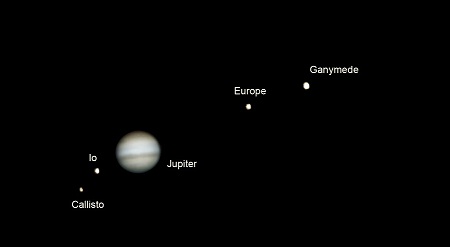Posted On: Tuesday - January 22nd 2019 7:17PM MST
In Topics: Geography Science
There was a beautiful lunar eclipse 2 nights back. This reminded our blog staff of an "upcoming" post promised way back in the summer of '17, the day of that once-in-a-lifetime (for folks without Lear Jets) solar eclipse in a post called Eclipses in History: Learn some science - it may save your ass some day. The post discussed the use of science by Western Civilization's own Cristobal Columbus to get out of a tight spot with the natives of the island of Jamaica.
I'd mentioned the fact that scientists were known to be included as part of the team on those courageous and amazing voyages of discovery 4 to 500 years ago. One reason was that the science of Astronomy was useful for purposes of navigation and map-making, and eclipses and the like have something to do with this. Observations of rare lunar eclipses (our moon entering the Earth's shadow) and much rarer solar eclipses (the Earth entering the shadow of our moon) from various far-off locations served to increase scientific knowledge. However, for these 4 moons below, it was the other way around - the science of Astronomy helped explorers gain more accurate position information:

These 4 of more than a dozen moons that orbit the brightest planet in our sky, Jupiter, are by FAR bigger than the rest. They were observed as soon as Galileo Galilei made a half-way decent model of his invention, the telescope*. They could be seen with the unaided eye were they not so close to the bright disc of Jupiter. However, even 7-power binoculars will make them out easily. The mechanics of the orbits of moons and planets had been worked out before, during, and since that time, and now let me get to the geography for a bit.
A great book named Longitude by author Dava Sobel discusses the major stumbling block for accurate navigation and map-making of those years, the determining of longitude. Why is latitude so much easier to determine? It wasn't about getting accurate sextant-based angle measurement from the horizon to known astronomical bodies. Hell, even an amateur now could get a fix within a few minutes of arc, with each minute being 1 nautical mile (~ 1 and 1/8 "normal" miles).
Why can't one do the same along a curve the other way? You could, but the problem is that, unlike latitude, with the rotation of the Earth, the object moves with the date and time. These guys knew that date, but what one may not realize, is that timekeeping was not what it is now. Not only were the no GPS time signals, or (going back 30 years) ham radio time signal stations, but clocks were just not accurate in the long run. As described in the book by Mr. Sobel, finding accurate longitudes meant the invention of clocks with long-term accuracy.
That was a big quest back then, Holy Grail expeditions notwithstanding to build a better clock. There was a lot of money involved, and eventually a guy named Harrison, after 40 years of work, gave the world of exploration what it had lacked. In the meantime, though, could there be another way? I really believe that scientists in those days had to be MORE CLEVER in their thinking than those nowadays. How else could one know the standard accurate time in Greenwich, London, England (which we still use today as GMT, Greenwich Mean Time) after having traveled thousands of miles over some months with inaccurate clocks? Well, let's get back to ...
(This is getting too long for one post. I will finish the 2nd within 1/2 hour of posting, as the suspense is probably killing you, right?)
* BTW, there's more on this whole "China invented everything"** mantra in the Wiki page I checked to find Galileo's last name (easy, right?) and some moon sizes:
"A Chinese historian of astronomy, Xi Zezong, has claimed that a "small reddish star" observed near Jupiter in 362 BC by Chinese astronomer Gan De may have been Ganymede, predating Galileo's discovery by around two millennia [7]"
Really? Is that how science works? One guy in China 2,381 years ago saw what we now know is Ganymede, and reported it as a star. So damn what, Wiki! That's NOT the discovery that it IS a MOON of Jupiter, because there's no science there. I can see a bit of anti-Western slant there on Wikipedia. As Mr. Galilei might say, " ... yet it moves ... and you don't know squat about it."
** OK, that was just a humorous post, but a review of the book The Man who Loved China will have more on this topic in, what, another year and a half?
Comments: